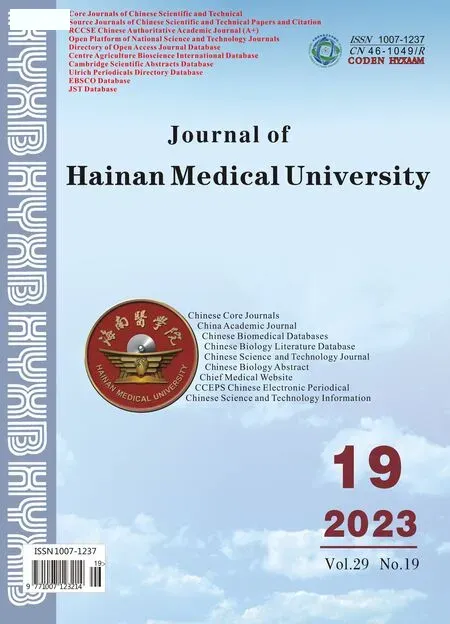The protective effect and mechanism of rhein on diabetic cardiomyopathy by regulating Sirt1 / PGC-1α pathway
WANG Tian-tian, WANG Wei, YANG Cui-hua, LU Bin✉
1.Jinling Clinical Medical College of Nanjing Medical University, Nanjing 210002, China
2.General Hospital of Eastern Theater of Command, Nanjing 210002, China
ARTICLE INFO
Article history:
Received 23 April 2023
Received in revised form 13 July 2023
Accepted 25 Aug 2023
Available online 14 Oct 2023
Keywords:
Rhein
Diabetic cardiomyopathy
Sirt1
PGC‐1α
ABSTRACTObjective:To explore the protective effects of rhein on cardiomyocyte injury in DCM and its possible mecha-nism.Methods:The diabetic model was induced by intraperitoneal injection with streptozotocin and high-fat diet.The mice were randomly divided into control group,DM group, and DM+RH group.After 12 weeks treatment with rhein, the change of fast blood glucose, body weight, and heart weight/body weigh(t HW/BW)were observed.HE and Masson staining were used to evalu- ate myocardial structural damage.Transmission electron microscope was used to observe the myocardial mitochondrial structure.The mRNA levels of Sirt1, PGC-1α, TFAM, ANP, BNP and β-MHC were quantified by RT-PCR.Sirt1, PGC-1α and TFAM protein levels were estimated by Western blot and IHC.Results:Compared with control group, the blood glucose, HW/BW, ANP, BNP and β-MHC mRNA of DM group were significantly increased(P<0.05).The structures of myocardium and mitochondria were obviously destroyed in DM group.Sirt1, PGC-1α and TFAM expression were significantly decreased(P<0.05).Compared with DM group, the blood glucose, HW/BW, ANP,BNP and β-MHC mRNA of DM+RH group were decreased(P<0.05).The myocardial and mitochondrial injury were improved.Sirt1, PGC-1α and TFAM expression were significantly increased (P<0.05).Conclusion:Rhein exhibits protective effects on diabetic cardiomyopathy which may be achieved by activating Sirt1/ PGC-1α pathway.
✉Corresponding author: LU Bin, Ph.D, Associate Professor, Master's Supervisor.
E-mail: lubin@nju.edu.cn.
Fund Project: National Natural Science Foundation Project (No.81873174)

